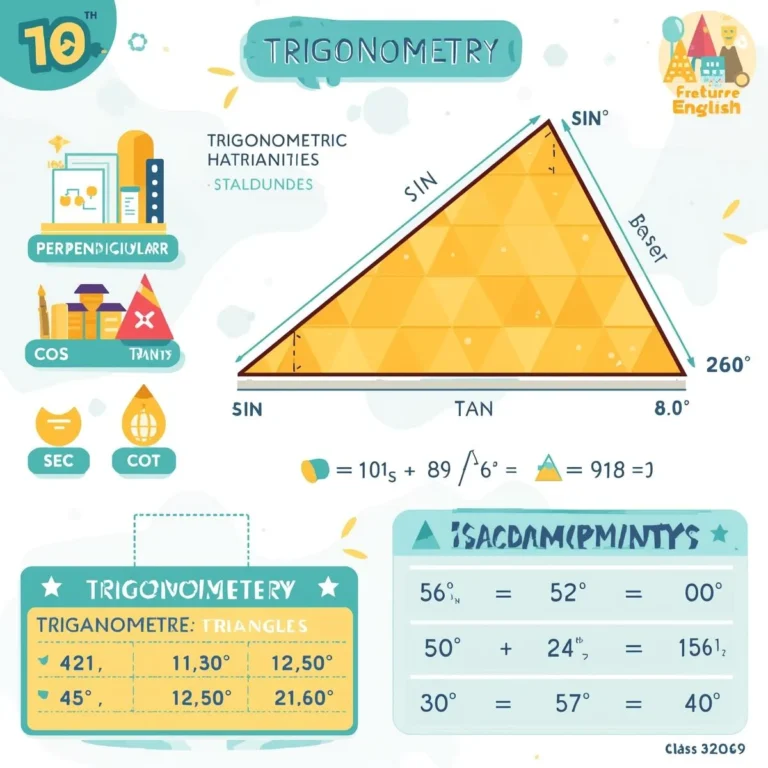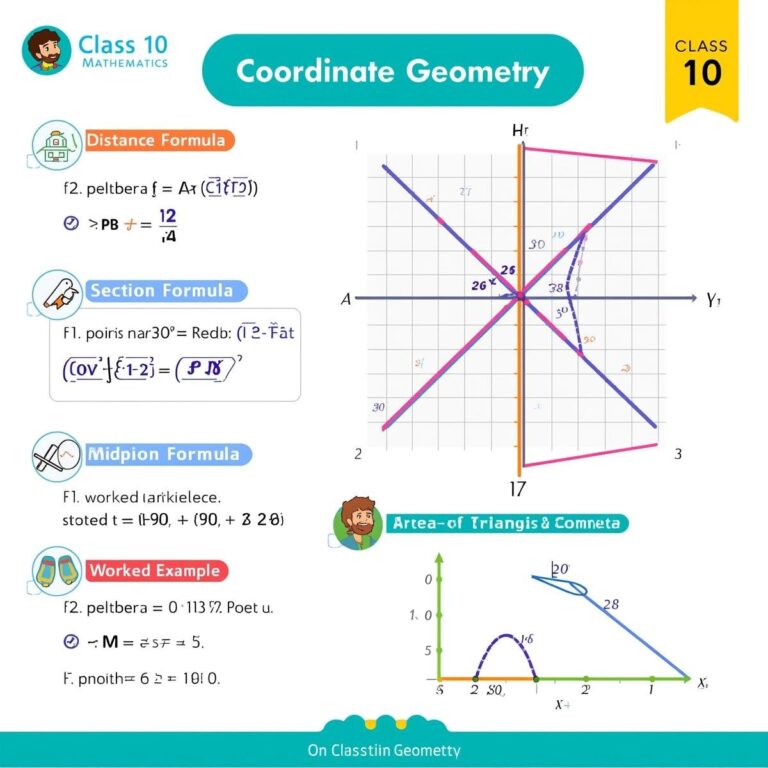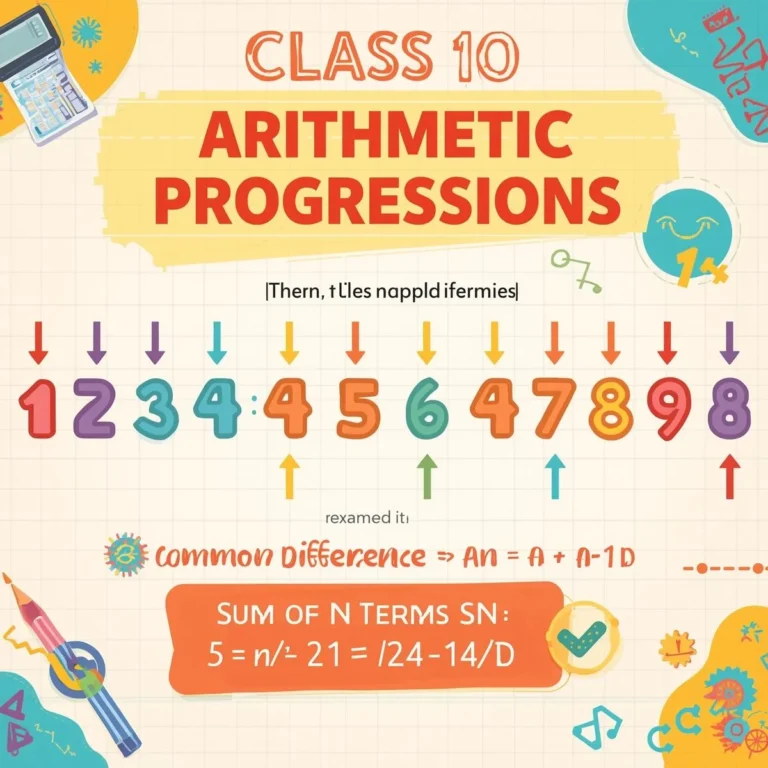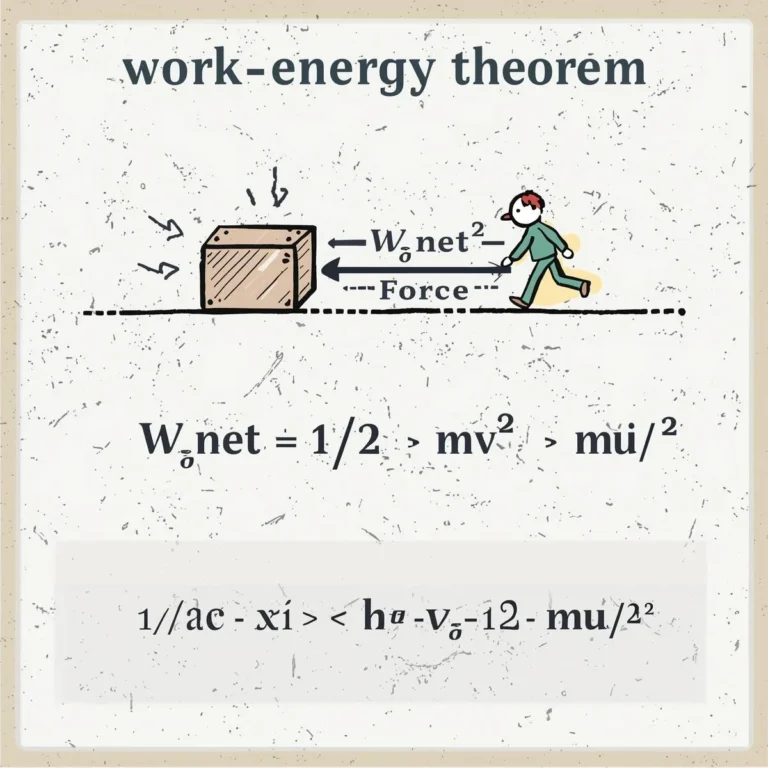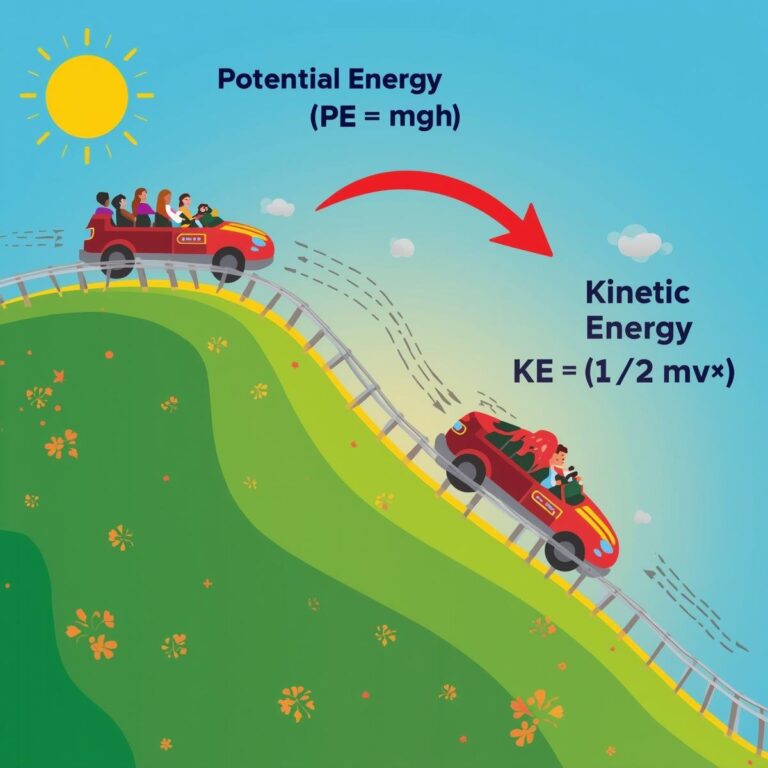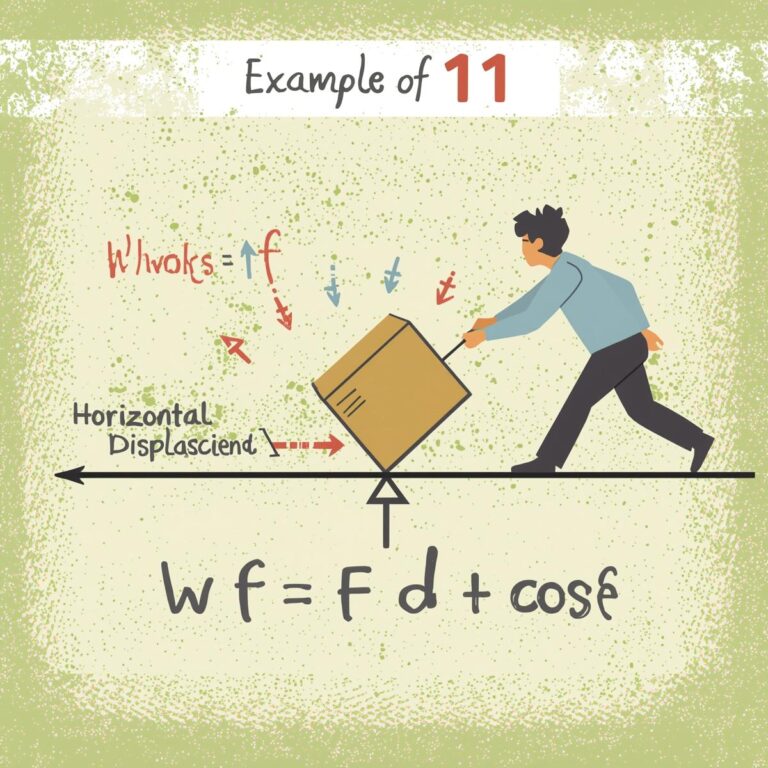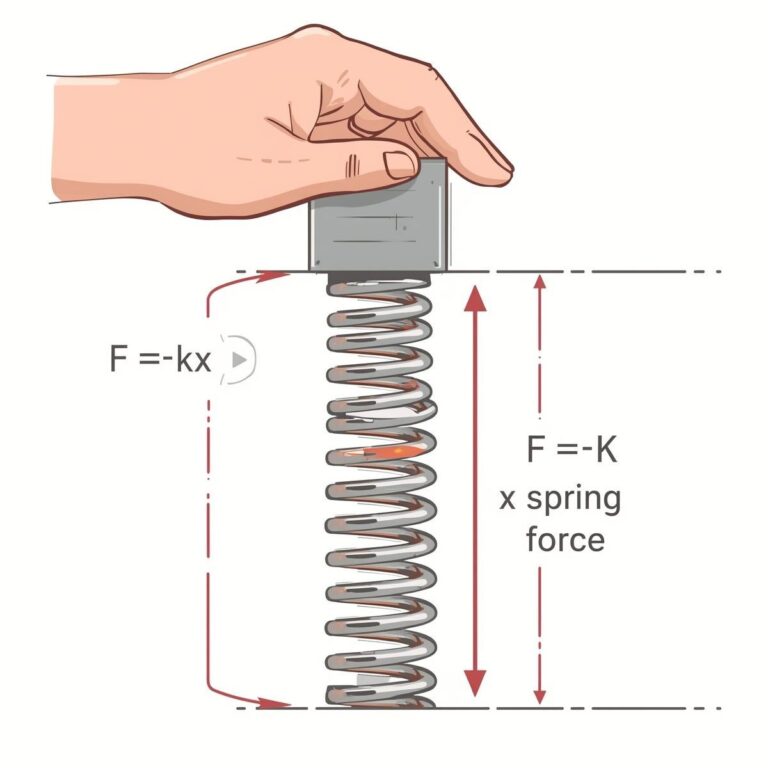Definition
A triangle is a closed figure formed by three line segments joining three non-collinear points. It has three sides, three angles, and three vertices.
Types of Triangles
- Based on Sides:
- Scalene Triangle: All sides and angles are different.
- Isosceles Triangle: Two sides and two angles are equal.
- Equilateral Triangle: All sides and all angles are equal (each angle is 60°).
- Based on Angles:
- Acute Triangle: All angles are less than 90°.
- Right Triangle: One angle is exactly 90°.
- Obtuse Triangle: One angle is more than 90°.
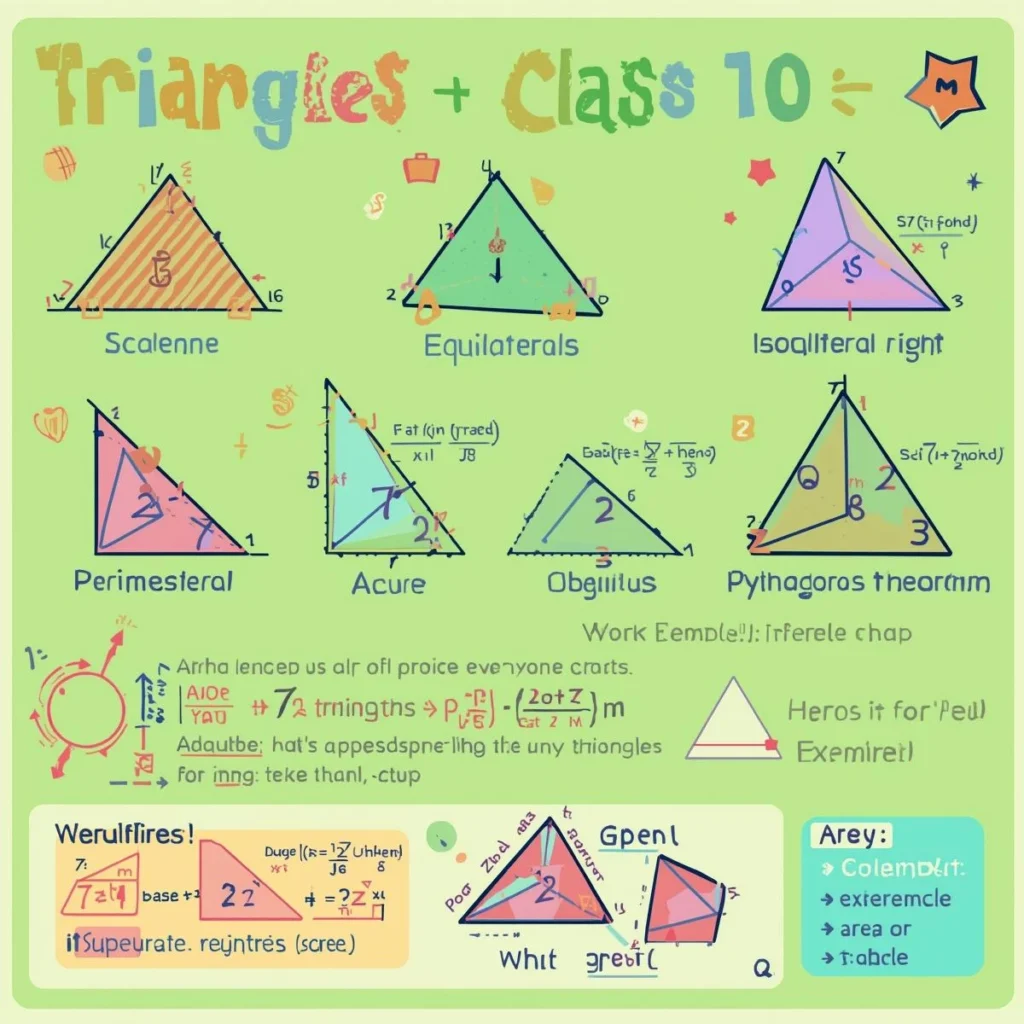
Important Formulas
- Perimeter:
( \text{Perimeter} = a + b + c )
where ( a, b, c ) are the lengths of the sides. - Area (using base and height):
( \text{Area} = \frac{1}{2} \times \text{base} \times \text{height} ) - Area (Heron’s Formula):
( s = \frac{a + b + c}{2} )
( \text{Area} = \sqrt{s(s-a)(s-b)(s-c)} ) - Pythagoras Theorem (for right triangles):
( a^2 + b^2 = c^2 )
where ( c ) is the hypotenuse. - Area of Equilateral Triangle:
( \text{Area} = \frac{\sqrt{3}}{4} a^2 )
where ( a ) is the length of a side.
Example Problems
1. Find the area of a triangle with base 8 cm and height 5 cm.
( \text{Area} = \frac{1}{2} \times 8 \times 5 = 20 ) cm²
2. Find the area of a triangle with sides 7 cm, 8 cm, and 9 cm.
( s = \frac{7 + 8 + 9}{2} = 12 )
( \text{Area} = \sqrt{12(12-7)(12-8)(12-9)} = \sqrt{12 \times 5 \times 4 \times 3} = \sqrt{720} \approx 26.83 ) cm²
3. In a right triangle, if the two perpendicular sides are 6 cm and 8 cm, find the hypotenuse.
( c^2 = 6^2 + 8^2 = 36 + 64 = 100 )
( c = 10 ) cm
Summary Table
| Type | Formula | Description |
|---|---|---|
| Perimeter | ( a + b + c ) | Sum of all sides |
| Area (base & height) | ( \frac{1}{2} \times \text{base} \times \text{height} ) | General area formula |
| Area (Heron’s) | ( \sqrt{s(s-a)(s-b)(s-c)} ) | When all sides are known |
| Pythagoras Theorem | ( a^2 + b^2 = c^2 ) | Right triangle only |
| Area (Equilateral) | ( \frac{\sqrt{3}}{4} a^2 ) | All sides equal |
